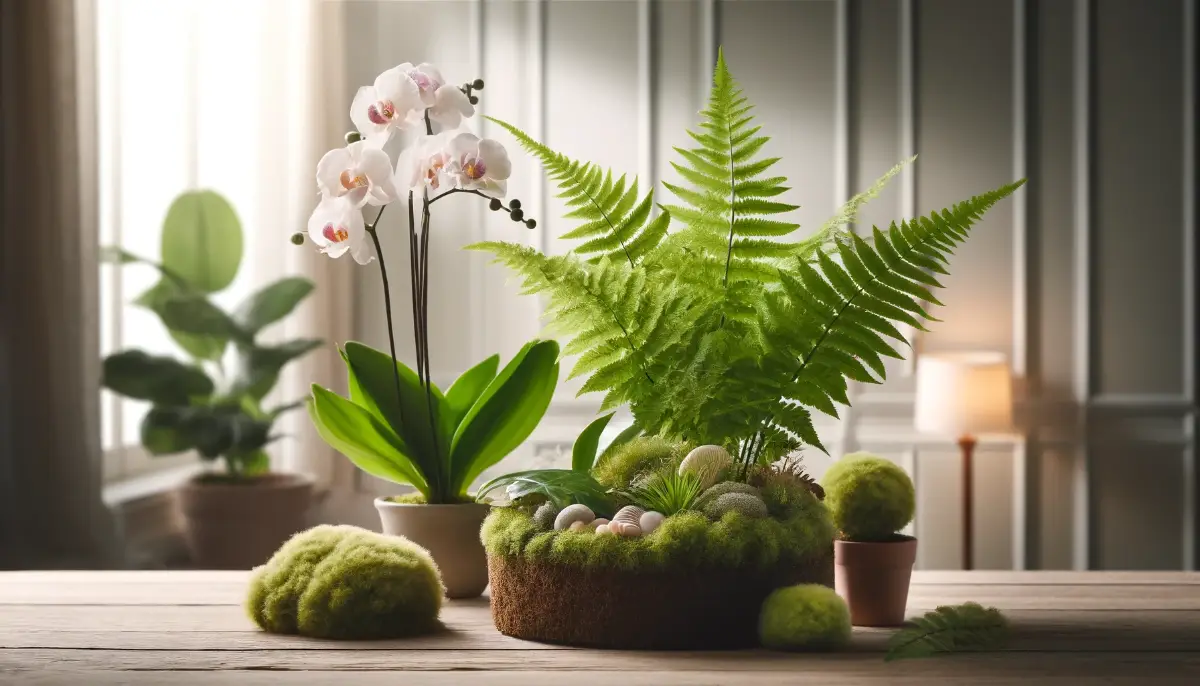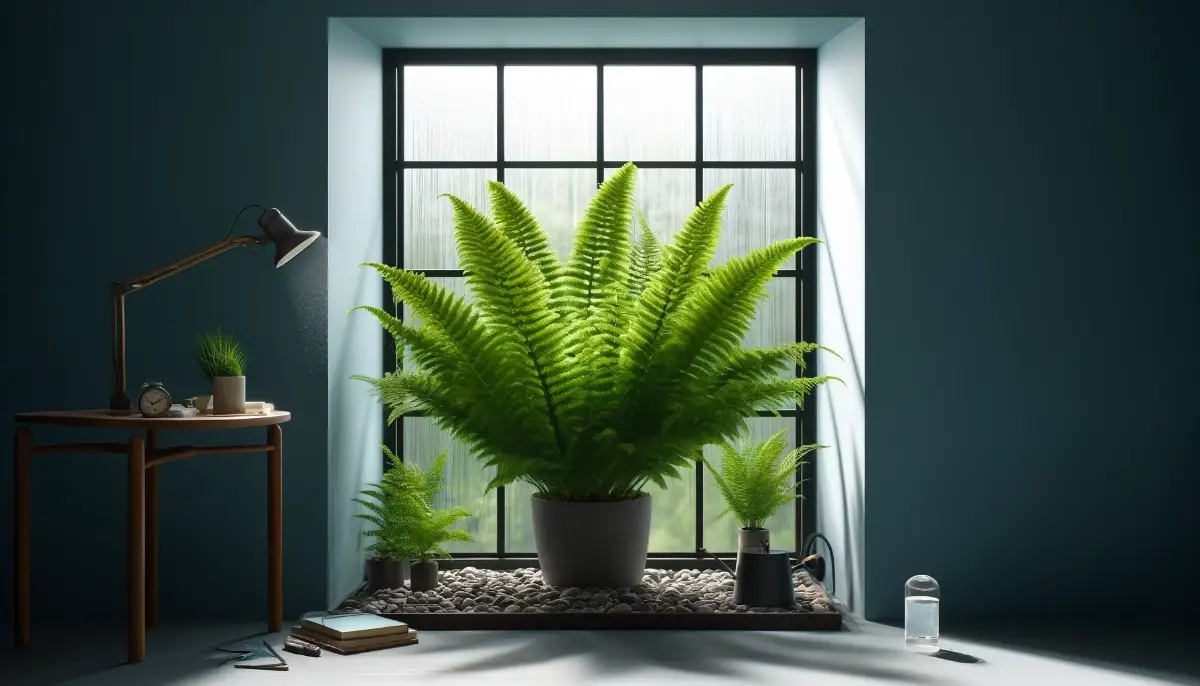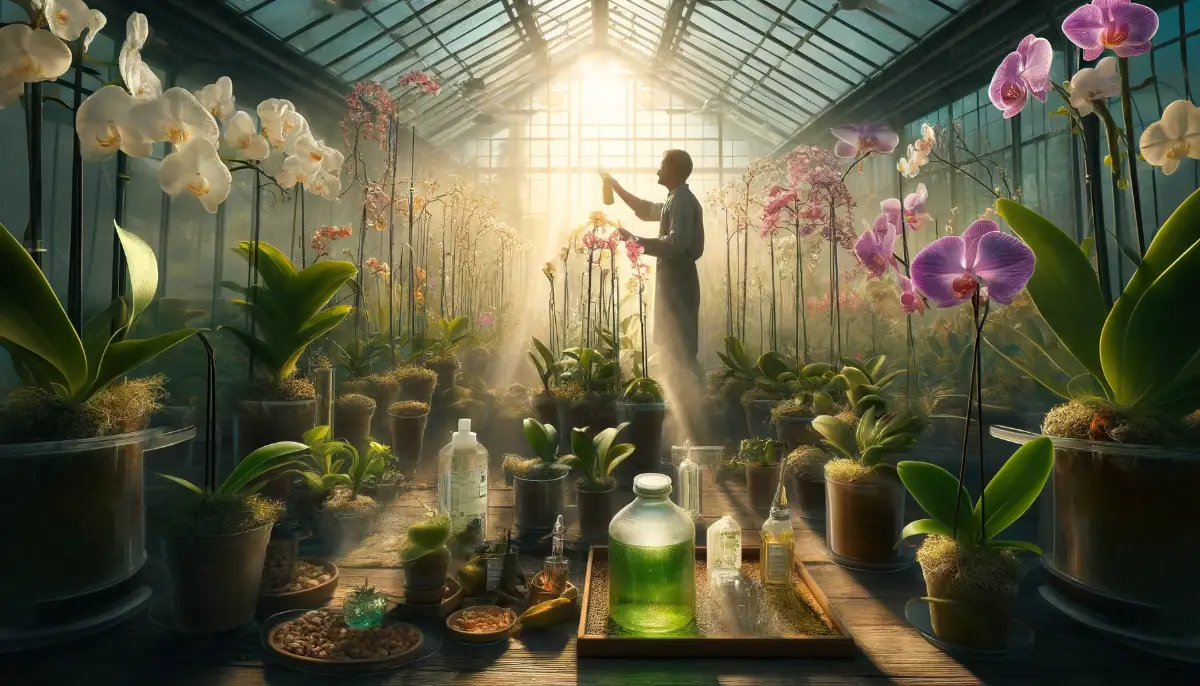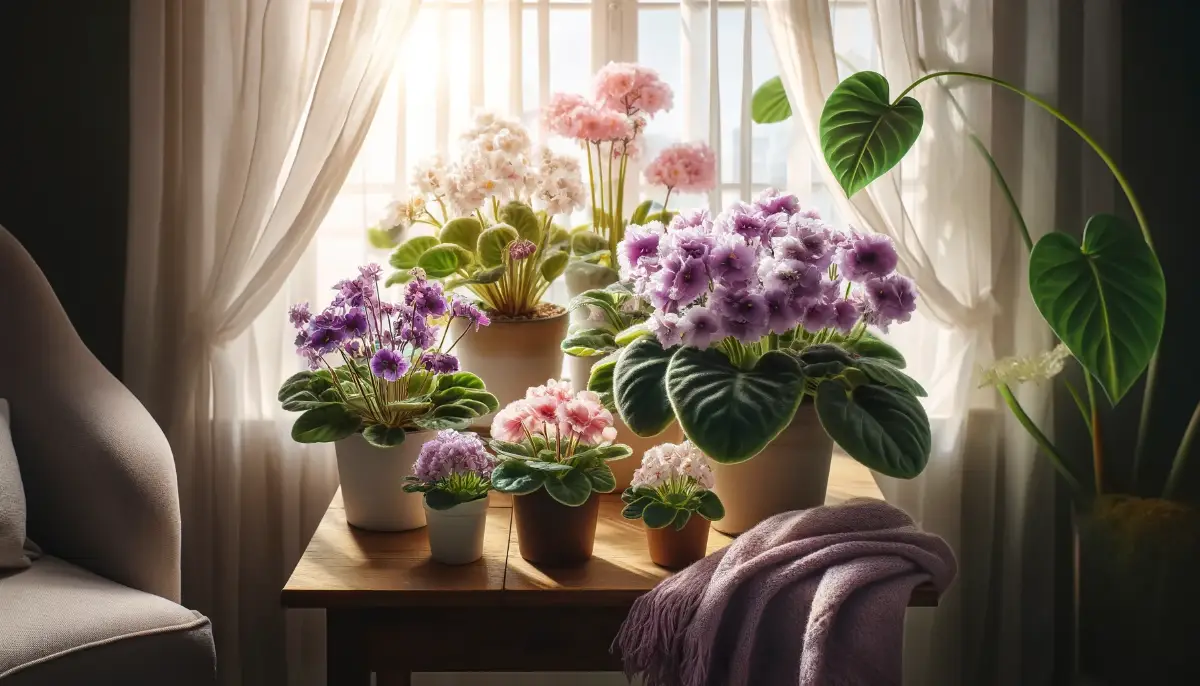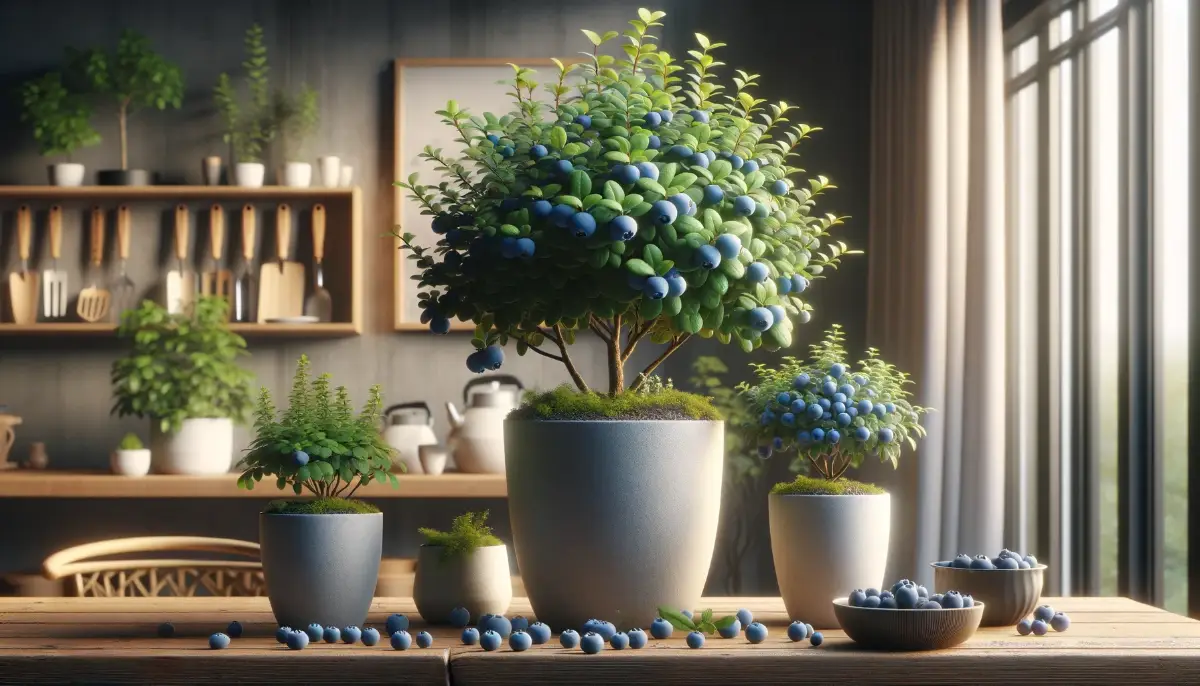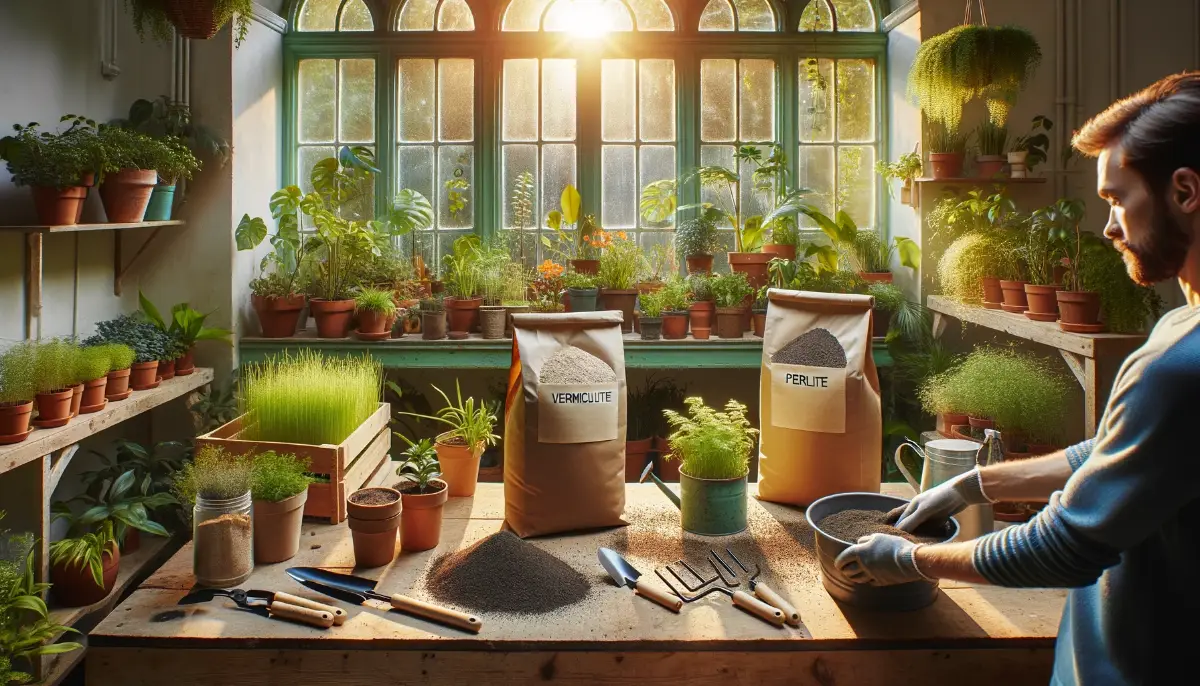Peat moss, a staple in gardening circles, is prized for its ability to enhance soil structure and promote healthy plant growth. Originating from sphagnum bogs, peat moss is composed of decomposed organic materials, primarily sphagnum mosses. It is harvested from peat bogs, where these mosses have accumulated over thousands of years, creating a dense, fibrous material.
In indoor gardens, peat moss is particularly valued for its superior moisture retention capabilities. This characteristic makes it an excellent component of potting mixes, especially for plants that thrive in moist conditions.
Additionally, peat moss is naturally acidic, helping to maintain the pH balance of the soil, which is crucial for acid-loving plants.
It’s organic and free from harmful pathogens, which makes it a safe choice for growing plants from seeds.
However, the environmental impact of extracting peat moss, including the depletion of peat bogs and the carbon emissions associated with its harvesting, has sparked debates about its use in sustainable gardening practices.
Indoor Plants That Flourish with Peat Moss
Peat moss is particularly beneficial for indoor plants that thrive in moist, acidic soil conditions. Here are some types of indoor plants that benefit the most from the inclusion of peat moss in their growing medium:
Ferns, such as the Boston fern or maidenhair fern, love the moisture-retentive properties of peat moss. The constant moisture helps keep the fronds lush and green.
Orchids, especially those that require a well-draining but moist medium like Phalaenopsis, benefit from peat moss mixed with other airy materials like bark or perlite.
Acid-Loving Plants like gardenias and azaleas, which are sometimes grown indoors, appreciate the acidic nature of peat moss which can help keep the soil pH low.
Carnivorous Plants such as Venus flytraps and pitcher plants require acidic and nutrient-poor soil to thrive, conditions that peat moss can help create.
African violets prefer a slightly acidic soil that is also light and fluffy to allow for good root health, which can be achieved by mixing peat moss with perlite and vermiculite.
Blueberries, while not a typical indoor plant, can be grown indoors and they thrive in acidic soil, which peat moss can help maintain.
Camellias, when grown indoors, also benefit from the acidic conditions that peat moss provides, helping to replicate their natural growing environment.
Incorporating peat moss into the potting mix for these types of plants can significantly improve their health by ensuring the soil remains acidic and moist. This helps the plants absorb nutrients more effectively and supports their overall growth and flowering. Always ensure that the peat moss is sustainably sourced to minimize environmental impact.
Key Benefits of Peat Moss for Indoor Gardens
Using peat moss in indoor gardens offers several benefits:
- Consistency in Moisture Levels: Indoor environments often experience fluctuations in humidity and temperature, which can affect soil moisture. Peat moss helps mitigate these fluctuations by maintaining consistent moisture levels in the soil.
- Reduced Watering Frequency: Because of its water retention capabilities, peat moss reduces the need for frequent watering, making it a convenient choice for gardeners with busy schedules or for climates that experience irregular rainfall.
- Support for Moisture-loving Plants: Plants that thrive in moist environments, such as ferns and tropical plants, will benefit significantly from the inclusion of peat moss in their growing medium due to its ability to maintain a humid microclimate around the roots.
Peat moss’s role in moisture retention is a cornerstone of its popularity in gardening, particularly for indoor settings where environmental control is crucial for plant health. Its ability to maintain moisture while also providing good aeration makes it an indispensable component of many potting soils and soilless mixes.
Moisture Retention Properties of Peat Moss
Peat moss is highly regarded for its exceptional ability to retain moisture, which is crucial for successful indoor gardening. This characteristic stems from the unique structure of sphagnum moss, from which peat moss is derived. Sphagnum moss possesses large, empty cells in its structure, which are capable of absorbing and retaining water much like a sponge. This makes peat moss an invaluable component in potting mixes, especially for plants that require a consistently moist environment to thrive.
How Peat Moss Retains Water
- Cellular Structure: The cells of sphagnum peat moss can hold 20 times their dry weight in water, providing a steady supply of moisture to plant roots. This is especially beneficial in controlled environments like indoor gardens where maintaining moisture levels can be challenging.
- Gradual Water Release: Unlike other materials that might release water quickly, peat moss releases moisture slowly, ensuring that plants have a sustained water supply. This gradual water release helps prevent common issues such as overwatering or underwatering, making plant care easier for gardeners.
- Aeration and Drainage: Despite its excellent water-retention properties, peat moss also promotes good aeration in the soil. It prevents the soil from becoming too dense, which can inhibit root growth and water penetration. This balance between retaining moisture and allowing air flow is key to healthy plant roots.
Peat Moss as a Soil Amendment
Peat moss is a favored soil amendment among gardeners due to its various properties that enhance soil quality and plant growth. It’s particularly useful in modifying the structure, aeration, and moisture retention of the soil, making it ideal for both indoor and outdoor gardening applications.
Enhancing Soil Structure
- Aeration and Drainage: Peat moss is lightweight and fibrous, which helps prevent soil compaction. The addition of peat moss to heavy soils like clay improves aeration, allowing roots to breathe more easily and water to drain more effectively.
- Texture Improvement: By mixing peat moss into sandy or rocky soil, the overall texture of the soil is improved. Peat moss helps sandy soil retain more water and nutrients, while also aiding in better root development due to its fibrous nature.
Acidity Adjustment
- pH Balance: Peat moss has a naturally acidic pH, which can help lower the pH of alkaline soils. This is particularly beneficial for acid-loving plants like blueberries, rhododendrons, and azaleas. By adding peat moss, gardeners can create an optimal soil environment for these types of plants.
Sterility and Safety of Peat Moss
Peat moss is a popular choice in gardening not only for its moisture retention and soil amendment qualities but also for its sterility, making it exceptionally safe for plant growth. The natural properties of peat moss ensure that it is free from pathogens, weed seeds, and harmful bacteria, which can significantly benefit seed starting and growing sensitive plants.
Natural Sterility
- Pathogen-Free: Due to the anaerobic conditions in peat bogs, peat moss forms in an environment that is low in oxygen. This condition inhibits the growth of many pathogens that could otherwise harm plants. The absence of harmful microorganisms makes peat moss an ideal medium for starting seeds and cultivating plants that are susceptible to disease.
- Weed Seed Free: Peat moss is also free of weed seeds. This feature is particularly important for gardeners looking to maintain a clean garden without the risk of introducing invasive species or additional weeding chores. By using peat moss, gardeners can ensure that their plants grow without competition from unwanted weeds.
Safety Features
- Chemical-Free: Peat moss is naturally organic and does not contain synthetic chemicals. It hasn’t been treated with pesticides or herbicides, unlike some other gardening products. This makes peat moss a safe choice for organic gardening, ensuring that plants are not exposed to potentially harmful chemicals.
- Antiseptic Qualities: Some studies suggest that peat moss has antiseptic properties, thanks to the presence of certain polysaccharides. These compounds can potentially inhibit the growth of harmful bacteria, further enhancing the safety of the growing environment for plants
Step-by-Step Guide on Incorporating Peat Moss into Indoor Garden
Incorporating peat moss into your indoor garden can greatly improve the soil’s structure and moisture management, promoting healthier plant growth. Here’s a step-by-step guide on how to do this effectively:
Step 1: Choose the Right Peat Moss
- Select Quality Peat Moss: Opt for high-quality sphagnum peat moss, which is most effective for gardening purposes. Ensure it’s finely milled for indoor use, as coarser types may be better suited for outdoor gardens.
Step 2: Prepare Your Potting Mix
- Create a Custom Mix: Mix one part peat moss with one part perlite and one part compost to create a balanced potting mix. This mix ensures good drainage and aeration while retaining enough moisture for plant roots.
- For Acid-Loving Plants: If growing plants like ferns or azaleas, increase the proportion of peat moss in the mix to enhance the acidity of the soil.
Step 3: Pot Your Plants
- Fill Pots: Use the prepared potting mix to fill your pots or containers. Make sure to leave enough room at the top to allow for watering without overflow.
- Plant Carefully: Place your plant in the center of the pot and gently cover the roots with the potting mix. Firm the soil around the plant to secure it in place but avoid compacting the soil too tightly.
Step 4: Watering Adjustments
- Initial Watering: Water your plant thoroughly after potting to settle the peat moss mix around the roots. This also helps to eliminate air pockets.
- Regular Monitoring: Peat moss retains moisture well, so adjust your watering habits accordingly. Check the soil moisture regularly to avoid overwatering, which can lead to root rot.
Step 5: Ongoing Care and Maintenance
- Top Dressing: Annually, refresh the top layer of peat in your pots to maintain its effectiveness. Remove the top few inches of old peat moss and replace it with fresh peat to ensure continued nutrient availability and moisture management.
- Monitor Soil pH: If you notice signs of plant distress, test the soil pH since peat moss can gradually acidify the soil. Adjust as necessary with lime to raise the pH or more peat to lower it, depending on your plant’s needs.
Step 6: Consider Environmental Impact
- Sustainable Practices: Be mindful of the environmental impact of using peat moss. Consider alternatives or ensure that your peat moss is sourced sustainably to minimize ecological damage.
By following these steps, you can successfully integrate peat moss into your indoor gardening routine, benefiting from its excellent properties while also caring for your plants in a responsible and sustainable way.
Tips on mixing peat moss with other types of soils
Mixing peat moss with other types of soils can significantly enhance soil structure, moisture retention, and acidity balance, making it an excellent choice for various gardening applications. Here are some tips on how to mix peat moss with other soils to achieve the best results:
Assess Soil Needs
- Identify Soil Type: Determine whether your existing soil is clay, sandy, or loamy. Peat moss can help break up heavy clay soils to improve aeration and drainage, while it can help sandy soils retain more moisture and nutrients.
- Consider Plant Requirements: Some plants prefer acidic soils, while others thrive in neutral to alkaline environments. Since peat moss is naturally acidic, it’s perfect for acid-loving plants like blueberries, azaleas, and rhododendrons.
Create a Balanced Soil Mix
- General Mixing Ratio: A common mix involves combining one part peat moss with one part each of garden soil and perlite or vermiculite. This mix ensures good aeration, drainage, and moisture retention.
- For Seed Starting: Use a finer mix, combining peat moss with equal parts of vermiculite and perlite to ensure lightness and moisture management, which are critical for germination and seedling growth.
Adjust pH as Needed
- Lime Addition for Neutral Plants: If growing plants that require neutral to alkaline soils, consider adding lime to the mix. Lime will counteract the natural acidity of peat moss and raise the soil pH.
- Test Soil pH Regularly: It’s a good practice to test your soil’s pH periodically to ensure it remains at the optimal level for your plants. Adjust the amount of peat moss or lime based on these test results.
Enhance Nutrient Content
- Incorporate Organic Matter: While peat moss is poor in nutrients, you can enrich the soil by mixing in compost or well-rotted manure, which will provide nutrients and further improve soil structure.
Consider Environmental Impact
- Use Sustainably: Be aware of the environmental impact of peat moss harvesting. Consider using peat moss sparingly and exploring sustainable alternatives like coconut coir or composted pine bark, which can provide similar benefits without the ecological concerns.
Mixing Technique
- Thorough Mixing: Ensure that peat moss and other components are thoroughly mixed before applying. Uniform mixing prevents waterlogging and uneven soil texture, which could negatively affect plant health.
Application
- Top Dressing: For existing garden beds, peat moss can be used as a top dressing. Spread a thin layer of peat moss over the soil and gently work it into the top few inches of the soil structure.
- Full Incorporation: When preparing new beds or repotting, mix peat moss deeply into the soil to improve the overall properties from the start.
FAQs about Peat Moss
What is peat moss?
Peat moss is an organic material composed of decomposed plants, primarily sphagnum moss, collected from peat bogs. It is widely used in gardening for its ability to retain moisture and improve soil structure.
Why is peat moss beneficial for indoor plants?
Peat moss is beneficial because it helps retain moisture in the soil, provides good aeration, and maintains an acidic pH that is preferred by many indoor plants.
Can peat moss be used alone as a potting medium?
While peat moss can be used alone for some specific plants like orchids and carnivorous plants, it is generally mixed with other materials like perlite and vermiculite to provide better drainage and aeration for most indoor plants.
Is peat moss sustainable?
The sustainability of peat moss is debated because it is sourced from peat bogs that take centuries to form. Harvesting peat moss can contribute to habitat destruction and carbon release, leading to environmental concerns.
What are some alternatives to peat moss?
Alternatives to peat moss include coconut coir, compost, pine bark, and recycled paper products, which are more sustainable and have similar properties for gardening use.
How often should I water plants in peat moss?
Watering frequency for plants in peat moss depends on the specific plant needs and the environment. Peat moss retains water well, so you might find that less frequent watering is required. Always check the top inch of the soil for moisture before watering.
How do I mix peat moss with other types of soil?
A common mixture is one part peat moss, one part perlite, and one part garden soil or compost. This provides a balanced medium that is ideal for most indoor plants.
Can peat moss change the pH of my soil?
Yes, peat moss is naturally acidic and can lower the pH of your soil, making it ideal for acid-loving plants but potentially harmful for plants that prefer neutral or alkaline soils.
Does peat moss contain nutrients?
Peat moss itself is low in nutrients, so it’s often necessary to add fertilizers or compost to provide the nutrients that plants need to thrive.
How do I properly dispose of used peat moss?
Used peat moss can be composted or added to garden beds to improve soil structure. Avoid disposing of it in the trash where it won’t break down in a landfill.

